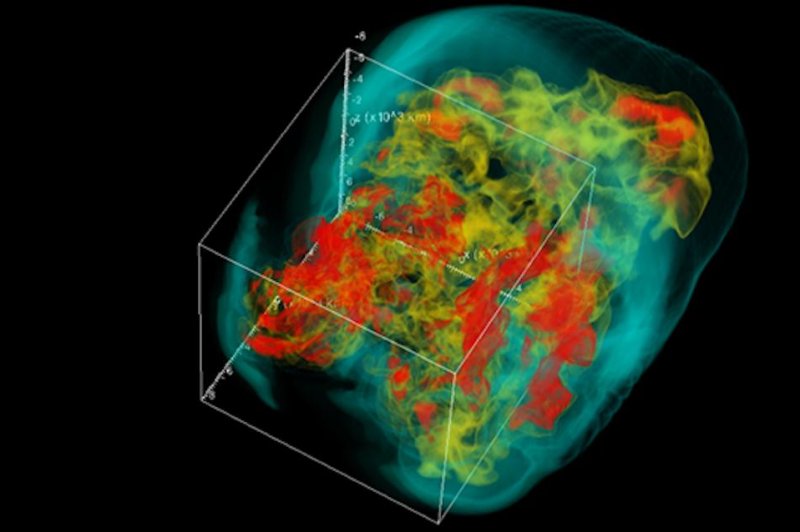A new simulation of supernovae has helped scientists understand how the collapse of stellar cores can lead to a violent explosion. Photo by Monash University
Sept. 14 (UPI) -- Researchers have designed a new 3D model of a neutrino-driven supernova, the longest and most detailed to date. The new computer model is helping astrophysicists understand the mechanics of massive star deaths.
When massive stars die, their giant iron cores -- typically 1.5 times larger than the size of the sun -- collapse in on themselves, forming an ultra-dense neutron star. The process takes only a fraction of a second.
"Scientists have been puzzled about how the collapse of a star turns into an explosion," Bernhard Müller, a researcher at the Monash Centre for Astrophysics, said in a news release. "The research team worked on a solution to this problem, and the most promising theory suggests that light and weak interacting particles called neutrinos are the key to this."
During the collapse, tiny subatomic particles called neutrinos travel outward toward the star's surface. Neutrinos are mostly immune to forces of gravity, and thus aren't pulled inward by the stellar collapse.
Particularly strong and hot stellar explosions can generate a shockwave of neutrinos traveling outward, reversing the collapse.
"Scientists have long attempted to show that this idea works with the help of computer simulations, but the computer models often still fail to explode, and can't be run long enough to reproduce observed supernovae," Müller said. "What is crucial for success in 3D is the violent churning of hot and cold material behind the shock wave, which develops naturally due to the neutrino heating."
Simulations showed significant mixing of hot and cold material in the collapsing silicon-oxygen shell led to a violent stellar explosion. The simulations also produced an explosion and spent neutron star resembling those observed in space.
"It's reassuring that we now get plausible explosion models without having to tweak them by hand," said Müller.
Researchers described their new model and simulations this week in the journal Monthly Notices of the Royal Astronomical Society.















